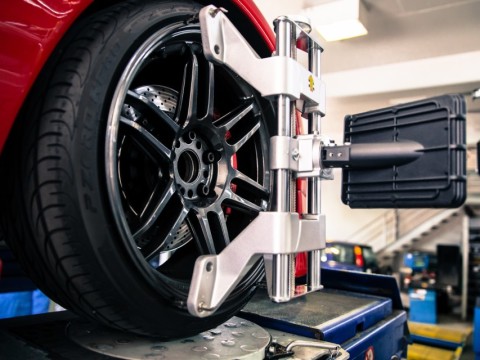As part of learning to drive new drivers are obliged to learn about the laws that govern our roads. The theory and practical exams include questions on everything from stop signals to speed limits. As part of the process you are also expected to learn how to look after your car. Under this category come the rules and regulations that govern car tyres in the UK. There are several rules along with advice on how best to remain compliant with them. If you are new to driving or simply wish to brush up on UK car tyre laws, then this is the guide for you.
The Tread
The tread on your car’s tyres is what helps it grip to the road, particularly in wet conditions. The grooves in the tyre’s rubber form patterns, which help dispel water from beneath the tyre to ensure that at least part of the tyre remains in contact with the road at all times.
Most tyres begin life with around 8mm of tread – that is, a groove of 8mm between the top of the tread and the actual tyre surface. Over time this tread wears down through friction with the road surface. Once the tread begins to near the legal limit it is time to replace your tyres.
The legal limit for tyre tread in the UK is 1.6mm across the middle 75% of your tyre. With that in mind, you must replace your tyres before this legal limit is reached. The maximum penalty for being stopped with illegal tread levels is £2,500 fine and 3 points on your license.
Moreover, driving with low tread levels dramatically increases your breaking distance. A typical saloon car travelling at 50mph will take roughly 8m longer to stop in the wet if it is being driven on tyres with 1.6mm of tread than compared to a car being driven on tyres with 3mm of tread. It is for this reason that many manufacturers recommend you change over your tyres once the tread has reached the 3mm mark.
The easiest way to check whether the tread on your tyres is acceptable is to purchase a tread-gauge. They are relatively inexpensive and available from most garages or automotive shops. The gauge allows you to clearly see how deep the tread is. It should be used around the circumference of all your tyres, bearing in mind that front and rear tyres will wear at different rates.
If the treads are below the legal limit it is time to have them replaced. Get in touch with your local garage or tyre fitting company and book an appointment. A Google search for ‘mobile tyre fitting Oxfordshire’ for example, should return a decent set of results for a local area (naturally replacing Oxfordshire with wherever you are in the country).
Fit for Purpose
Your tyres’ tread is not the only thing that must be maintained in the UK. The law also states that they must be ‘fit for purpose’, which entails a number of things.
Firstly, the tyres must be free of lumps or bulges or not have a tear or cut in them that is over 25mm. The ply or cord must also not be exposed and so it is important to check for these tell-tale signs of a loss of tyre integrity when you are performing your regular tyre checks. The tyre’s sidewalls are the most susceptible to this side of damage, so it is important to inspect them at least every month.
Each tyre must also be compatible with any other tyres you have fitted to your wheels. Whilst most standard road tyres are compatible across manufacturers, it is worth consulting your car’s manual to make sure. Winter tyres are usually not deemed compatible with summer tyres, so if you are considering changing your tyres for the winter months it is important to change the entire set.
Inflation
Finally, the law states that your car’s tyres must be inflated to the correct pressure as stated in the car handbook and manufacturer’s instructions. The correct PSI is also likely to be stated on the outside of your tyre’s wall.
Perform regular checks of your tyres’ pressure and if you find them regularly deflating at over 4-5PSI per month it is possible you have a puncture or the valves are damaged. Take the car to a garage or call out the aforementioned mobile tyre fitters and ensure the issue is fixed as quickly as possible.
